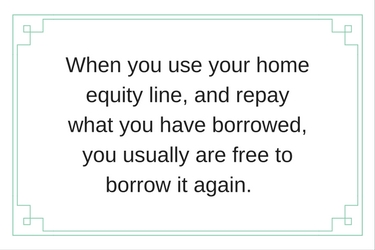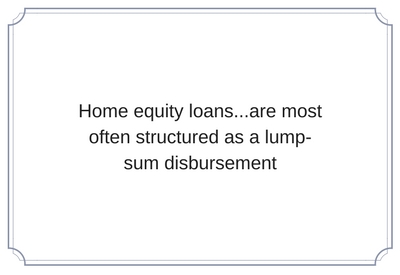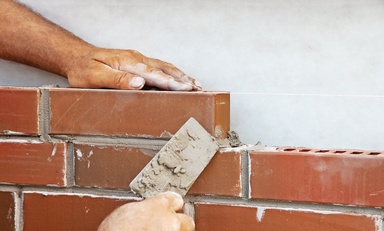 This article explains the most common ways that homeowners can access their home equity and identifies practical options for home equity loans or home equity lines of credit (HELOCs).
This article explains the most common ways that homeowners can access their home equity and identifies practical options for home equity loans or home equity lines of credit (HELOCs).
How can you access your home equity?
Home equity loans are issued to you in a lump sum at your closing, so accessing those funds are very straightforward.
Home equity lines of credit offer a few different options for accessing your money.
- Checkbook. The most popular funds distribution method is the checkbook method. At the time of closing, the lender issues you a checkbook. You write checks against, and make 'deposits' (loan payments) to the account, just as you would normally do with your personal checking account.
- Credit card. A somewhat less common method is via a credit card -- normally a widely accepted card, such as Visa or MasterCard. Of course, it's used just like any other credit card; except your payments are used to replenish the money you have available in the line.
- Debit card. An even less common approach is to access funds through a debit card; debit card is the official term for your Automatic Teller Machine (ATM) card.
 What's the difference between a home equity loan and line of credit?
What's the difference between a home equity loan and line of credit?
Home equity lines of credit work very much like any major credit card does; at the outset of the loan, you are approved for a certain amount that you can borrow -- your maximum credit line. When you use your home equity line, and repay what you have borrowed, you usually are free to borrow it again. These are formally known as revolving lines of credit, since you can borrow and pay back funds as many times as you wish, but within a certain set of terms we discuss in our next article, "Home equity loan terms."
Home equity loans, on the other hand, are most often structured as a lump-sum disbursement; that is, you receive a single, one-time lump of cash from the lender, and your payments are broken down into equal monthly payments for the life of the loan. In most cases, these are fixed rate loans, but they can also have adjustable rates.
How can you tell the difference between a variable rate line of credit and an adjustable rate home equity loan? It's all in the way that the cash is released to you. Remember, loans are usually one-time lump sum disbursements, and lines are available for you to use when you need to and in amounts you need.
One other item about accessing your home equity using a HELOC: Some lenders impose a "minimum draw" requirement -- that is to say, the least amount you can draw in a single transaction is set by the lender. Not all lenders have such a requirement, but where they exist these are usually amounts of $250 to $500.
 Example home equity line of credit repayment
Example home equity line of credit repayment
The other main difference is in the way the money is repaid. With the home equity loan, you typically have equal monthly payments for the entire loan term. But, with a line of credit, your payments are normally a percentage of the outstanding credit line balance -- commonly about 2 percent of the amount borrowed. HELOC payments are based on how much money you've borrowed on your Line, not on the maximum credit line for which you're approved.
Example home equity loan repayment
A homeowner with positive home equity takes a $25,000 home equity loan for planned home improvements. The lump sum is distributed up-front for a term of 10 years at an interest rate of 6.99%:
| Amount borrowed |
Term years |
Fixed |
Monthly payment |
| $25,000 | 10 | 6.99% | $290 |
The same homeowner may consider a line of credit with a maximum draw of $25,000. That individual could elect to draw the entire amount at the onset of the HELOC, or could borrow a smaller amount up front, and repay at least 2% of the amount borrowed monthly, plus interest. The borrower could access additional funds later during the draw period, as needed.
| Amount borrowed |
Term years |
Variable |
Monthly payment |
| $25,000 | 10 | 6.99% | $166 |
Actual payments may vary depending upon how much of the credit line is accessed at any time and any interest rate changes that occur throughout the HELOC's term.
Common home equity loan terms are explained in the next article in this section.
Next article: Common home equity loan terms
Previous article: Determining how much home equity you can borrow



